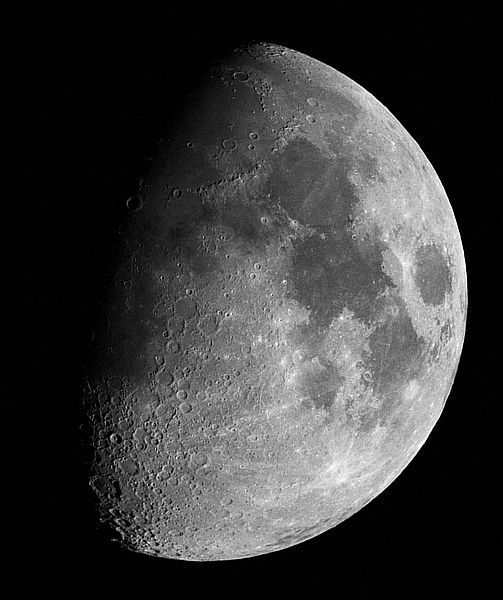Last night I was back out on the yard trying out different astrophotographic methods and a few home-made gadgets for making this scoping business a little easier.
Using the Baader zoom eyepiece for the 3-star alignment routine makes the process a doddle. Centre a calibration star in the finderscope and it's usually visible in the field of view of the Baader when it's set to 24mm. Re-centre it in the eyepiece then zoom in to 8mm and recentre it again. Reset the finderscope again, so the star's centred in both fields of view. Much easier than having to change eyepieces again and again...
After doing the alignment routine I told the handset to slew the scope around to the Moon and then I set the tracking to Lunar Mode. After taking a few shots afocally (D50 with 18-55 lens @ 55mm through 20mm eyepiece) I decided to try some prime-focus shots (D50 body T-mounted directly to the scope) and rattled off a series of shots at various speeds after getting a fairly good focus using the Hartmann Mask. I reduced the diffraction-spikes by fitting a shroud around the open end of the scope to prevent ambient light from hitting the vanes that support the secondary mirror. The shroud, like the Hartmann Mask, is a simple home-made jobbie made out of a bit of closed-cell foam sleeping-mat.
Mars was out of sight behind the house, so next up was Saturn. Again, I got great views through the zoom, the Cassini Division in the rings was well-defined and all five of the main moons stood out well despite the glare of their mother planet. I couldn't take any pics because the camera had iced up and needed taking inside to recover.
I had a look at a few DSOs before packing away and getting the kit (and myself) inside to defrost.
Anyway, here's the best image of the night, click it to go large:

D50 on C8-N at prime-focus, 12 frames at 1/1000s, ISO 200, stacked in DSS, not Photoshopped (yet).
Next, I need to work on the focusing for imaging stars using the prime-focus setup. Maybe when this cold-snap's over.








